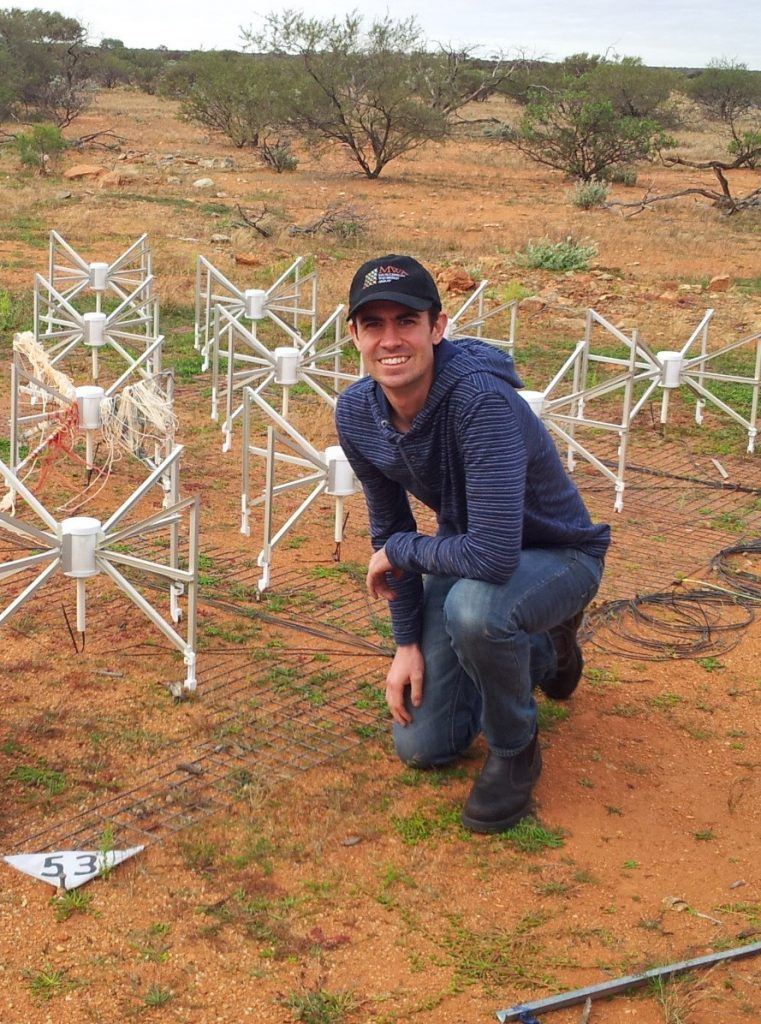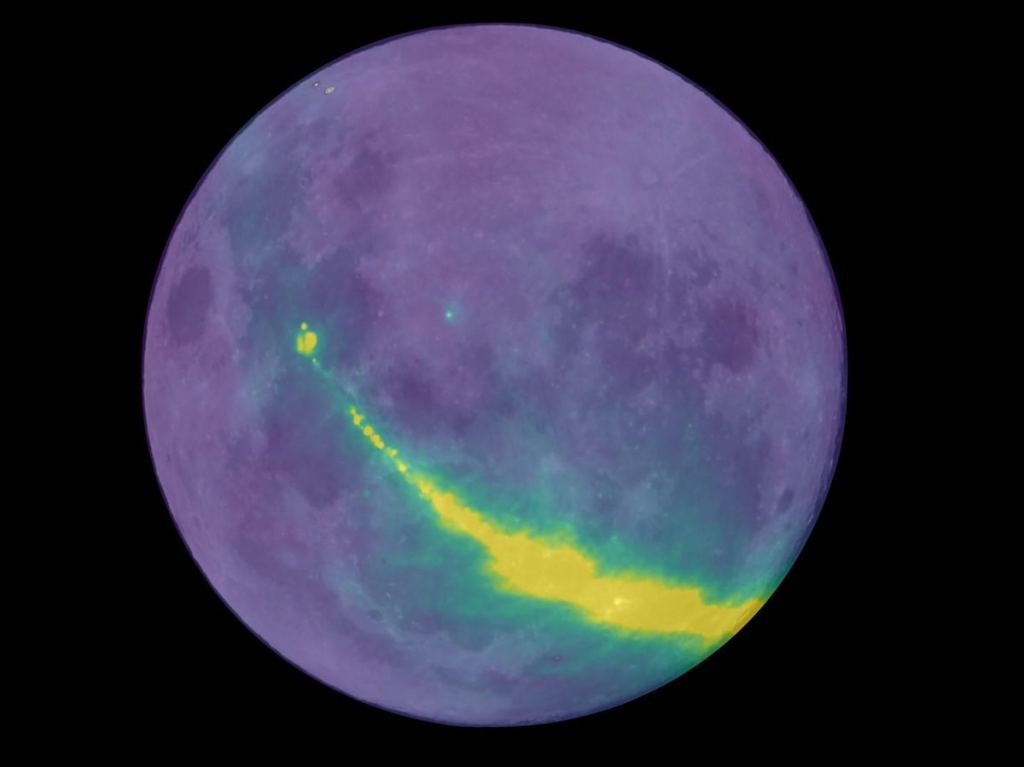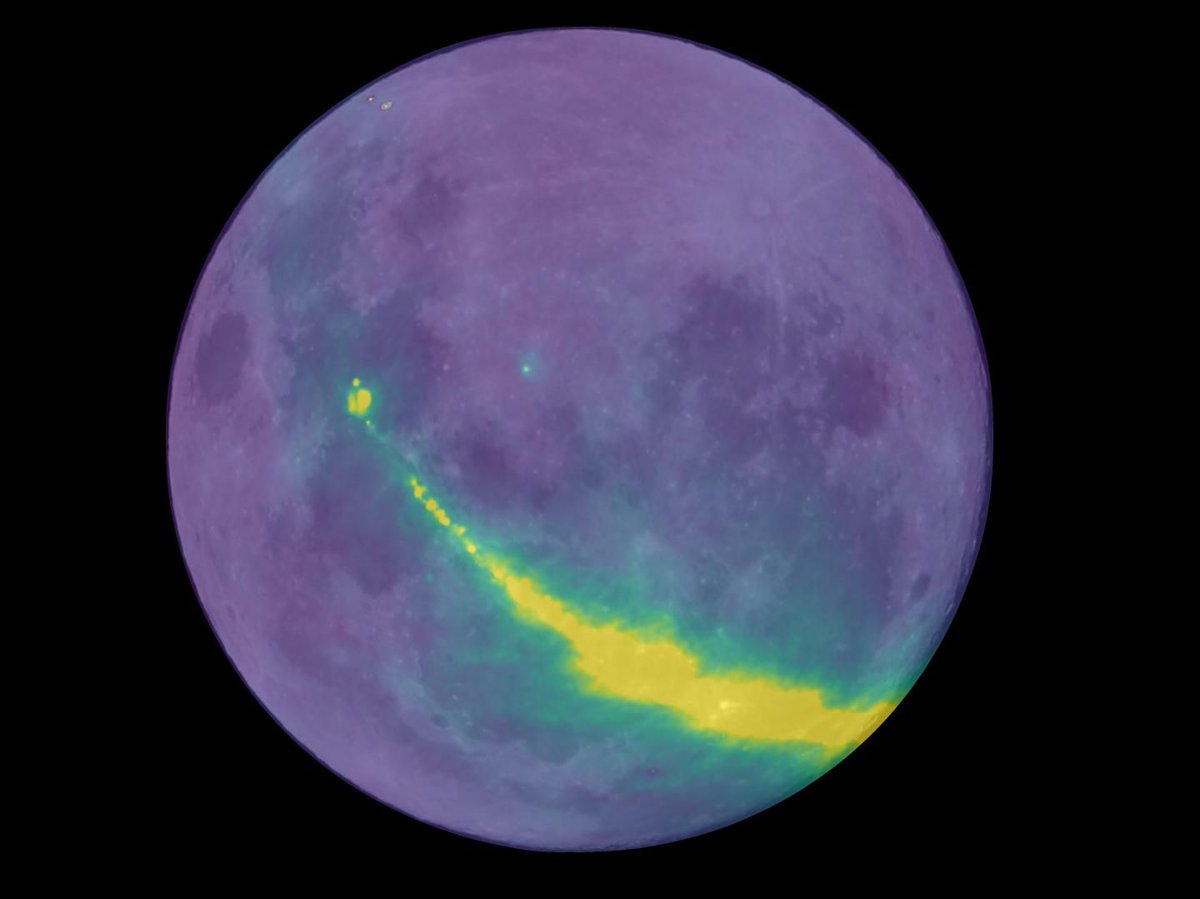The universe wasn’t always such a well-lit place. It had its own Dark Ages, back in the days before stars and galaxies formed. One of the big questions in astronomy concerns how stars and galaxies shaped the very early days of the Universe. The problem is, there’s no visible light travelling through the Universe from this time period.
Now, a team of astronomers led by Dr. Benjamin McKinley of the International Centre for Radio Astronomy Research (ICRAR) and Curtin University are using the Moon to help unlock these secrets.
The universe has its own historical timeline, and understanding this new research requires a look at this timeline. After the Big Bang got things rolling, there were about 377,000 years where not much happened. No stars had formed yet, and it was just too hot for photons to travel. This first chunk of time has the easy-to-remember name “Early Universe.”

At about the 377,000 year mark, the Universe had cooled enough that it became transparent. At that time, the Universe was dominated by energetic hydrogen atoms. As they cooled, the hydrogen released photons. The photons from this time are known as the Cosmic Microwave Background (CMB). The CMB is kind of like a big flash of that moment, imprinted on the background of the cosmos.

The 377,000 year mark is where the Dark Ages began, and it continued until around the 1 billion year mark. It’s called the Dark Ages because there were no stars, and of course, no starlight. There was the light from the CMB, but it doesn’t tell us what we need to know. Luckily, all that hydrogen that had cooled and left the CMB for astronomers to study wasn’t done yet. Those hydrogen were now neutral, but they still released the occasional photon, and those photons are known as the 21 cm spin line of neutral hydrogen. Phew! Take a breath.
Which brings us to this new study. There’s a lot of research into this neutral hydrogen because it’s the most promising avenue for studying the early days of the Universe. The problem is that the signal is very weak, and it’s shrouded by other bright astrophysical objects in the foreground. The instruments used to measure it also introduce systematic effects that need to be reduced. And that’s what this study is really about.
The authors point out that this is the first in a series of papers on this research. The use of the Moon and Milky Way reflecting off it are part of the finely-tuned calibration required to probe the 21 cm. spin line of hydrogen, or what we’re going to call the light from early neutral hydrogen.
Dr. McKinley and the other researchers are using a radio telescope called the Murchison Widefield Array (MWA) located in a radio-quiet area in the Western Australia Desert. The MWA is an interferometer made up of 256 separate installations covering an area of 6 sq. km. Each of these 256 sites contains 16 separate receivers, with the whole system linked together.

What Dr. McKinley and his team are really trying to do is use the MWA to “drill down” through the brightness of the Universe in order to see the light from the neutral hydrogen in the Dark Ages. First they drill through the brightness of the Milky Way, then the light from other galaxies, then the CMB. Hopefully, after all that has been accounted for, what is left is the light from the neutral hydrogen. This study is the beginning of their attempt to isolate the light from the neutral hydrogen.
“We have measured the value of the mean brightness of our Galaxy at the spot where the Moon occults it, to show that the technique works.” – Dr. McKinley, ICRAR.
In this early experiment, the team used the capabilities of the Murchison Widefield Array to measure fluctuations in the mean brightness of the sky. They did this by using the Moon to block out the sky. In an email exchange with Universe Today, Dr. McKinley explained the process. “So we use the Moon to produce a fluctuation about the mean by putting it in our field of view to occult the sky. We assume we know the brightness of the Moon (based on its temperature) and so we can infer the mean temperature of the sky.”
The problem is, the Moon is also a reflective body. The Universe is alive with radio waves bouncing around, and the Moon reflects some of those—including ones from the Milky Way—which have to be accounted for. As Dr. McKinley says, “But the temperature of the Moon is not only determined by its temperature. It also reflects radio waves including those originating from the Earth, and those coming from space. That is why I had to model the Milky Way bouncing off the Moon into the telescope. We calculate what the reflection should be based on a model of the Milky Way and then use that in our analysis (subtracting it away from the Moon brightness).”

The fascinating image of the Milky Way reflected off the Moon is not just a pretty picture. It represents a kind of proof of concept for the team’s methods of measurement. “We have measured the value of the mean brightness of our Galaxy at the spot where the Moon occults it, to show that the technique works,” Dr. McKinley told Universe Today.
Dr. McKinley and his team are only at the beginning of what they hope will be a fruitful line of inquiry. They still need to refine the way they account for foreground and background emissions in order to isolate the early hydrogen radio emissions. But if they can, then they will have opened a window onto the elusive 21 cm spin line of neutral hydrogen. And if they can observe that, they hope to answer some fundamental questions about the history of the Universe.
Sources:
- Research Paper: “Measuring the global 21-cm signal with the MWA-I: improved measurements of the Galactic synchrotron background using lunar occultation“
- ICRAR Press Release: “Moon helps reveal secrets of the Universe“
- Wikipedia Entry: Chronology of the universe


That is not a measurement of the Milky Way bouncing off the Moon. The figure caption in the paper says: “The reflected Galactic brightness … computed using ray-tracing and assuming a Moon albedo of 7%.”
In other words, its a computation, not an observation.